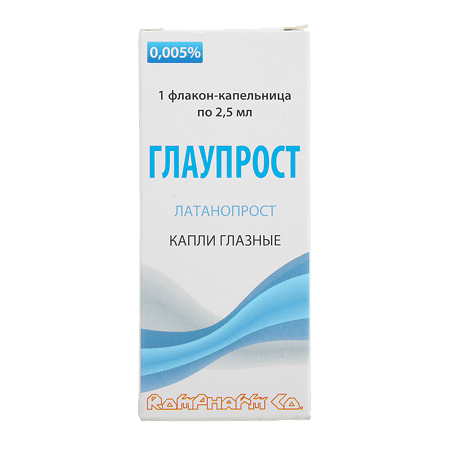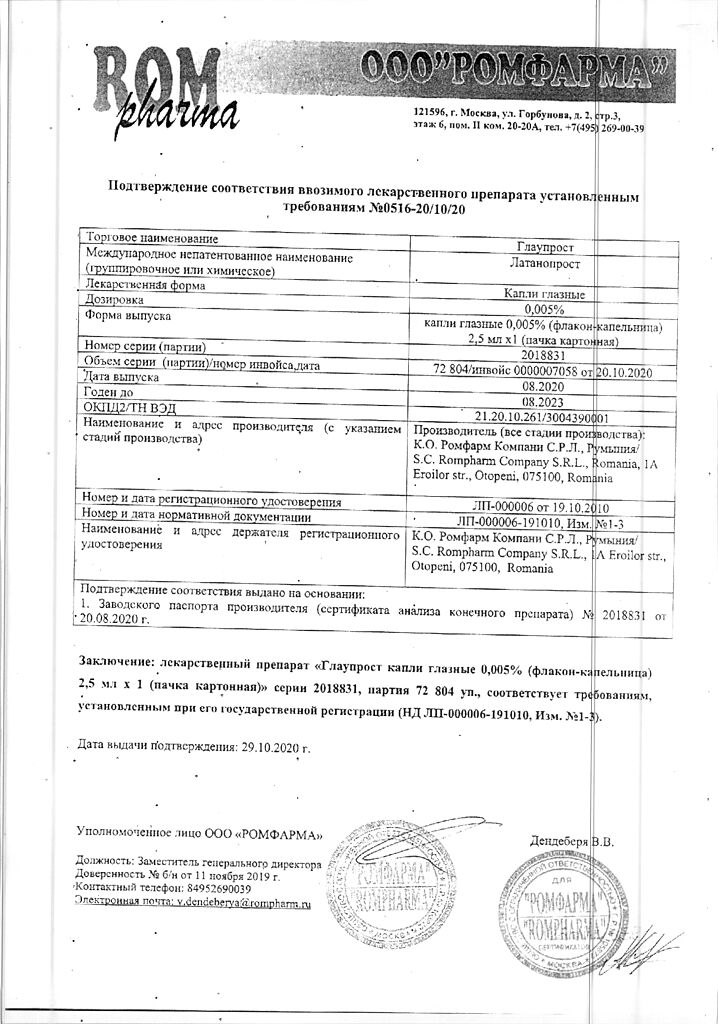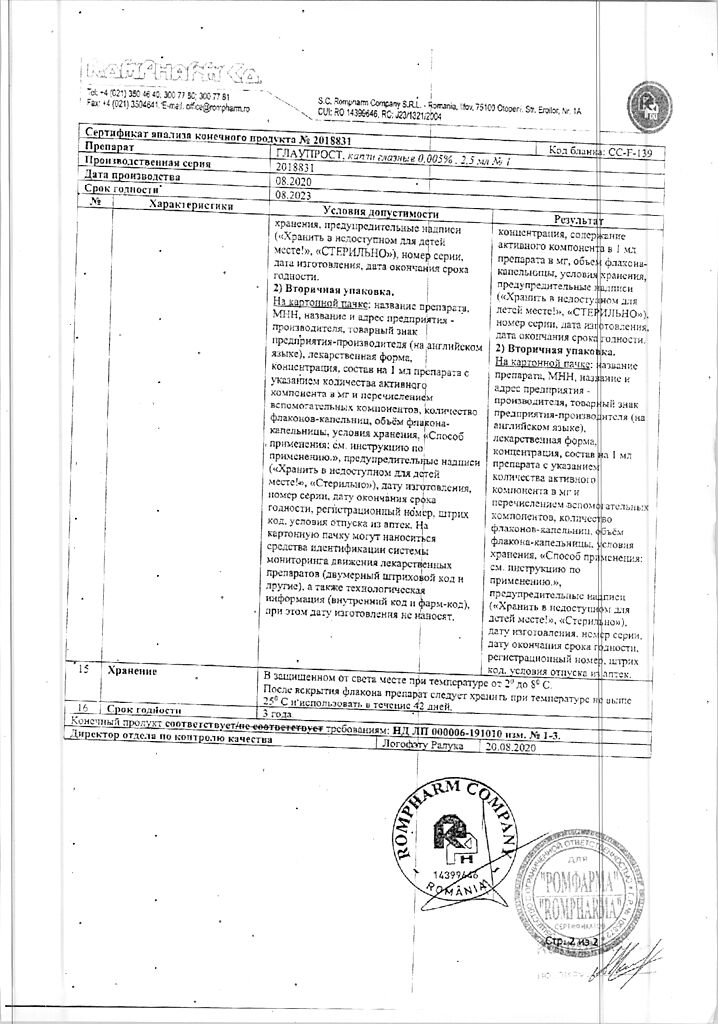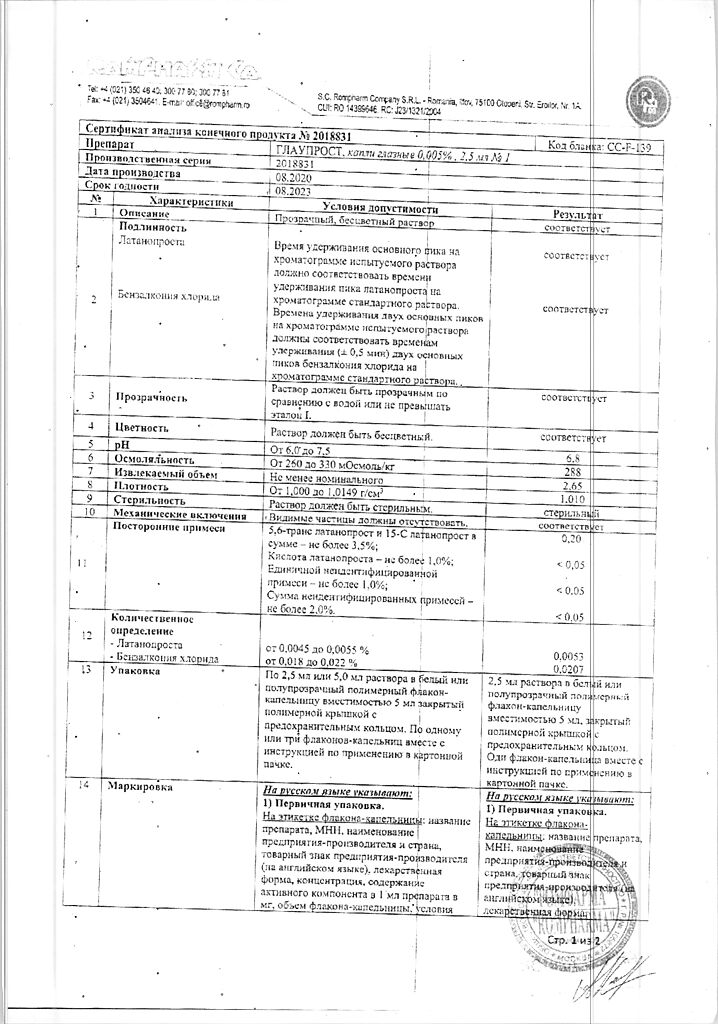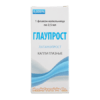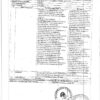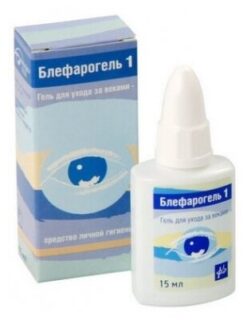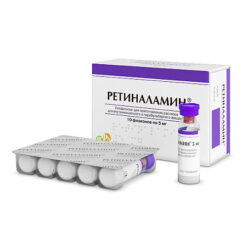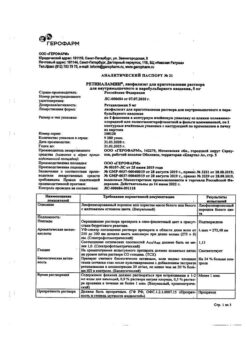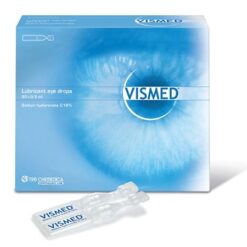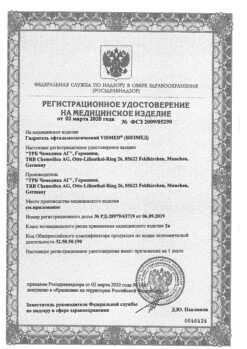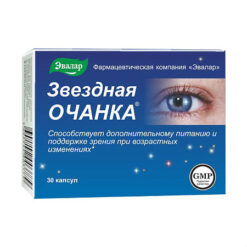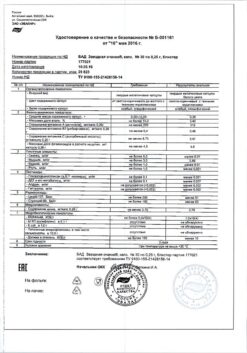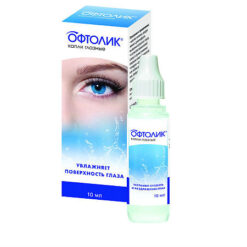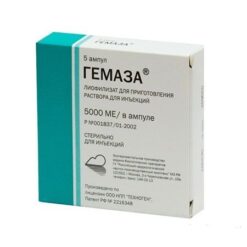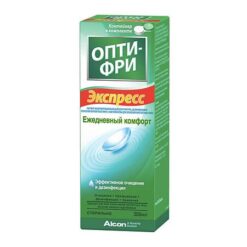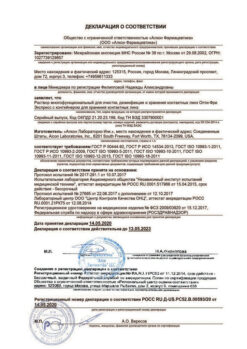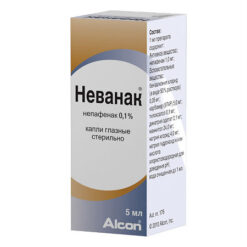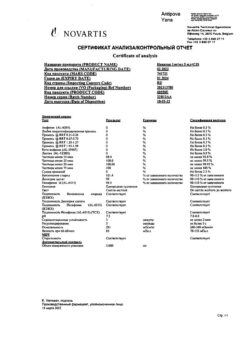No products in the cart.
Glauprost, eye drops 0.005% 2.5ml
€24.53 €20.45
Description
Antiglaucoma drug. Prostaglandin F2α analogue and selective FP-receptor agonist. Reduces intraocular pressure by increasing aqueous humor outflow, mainly via uveoscleral pathway, as well as through trabecular meshwork. Does not reliably affect aqueous humor production and does not affect the blood-ophthalmic barrier. Decrease of intraocular pressure starts 3-4 hours after injection of the drug; the maximum effect is registered after 8-12 hours; the action lasts for at least 24 hours.
Pharmacokinetics
It penetrates well through the cornea with hydrolysis to the biologically active form. Time of reaching maximum concentration (TC mah ) in aqueous humor is 2 hours after topical application.
Latanoprost acid is practically not metabolized in the eye tissues; metabolism occurs mainly in the liver. The elimination half-life (T 1/2 ) is 17 min. The main metabolites – 1,2-dinor- and 1,2,3,4-tetranormetabodites have no or little biological activity.
Extracted by the kidneys.
< br>.
Indications
Indications
Open-angle glaucoma and increased intraocular pressure.
Pharmacological effect
Pharmacological effect
Antiglaucoma drug. Prostaglandin F2α analogue and selective FP receptor agonist. Reduces intraocular pressure by increasing the outflow of aqueous humor, mainly along the uveoscleral pathway, as well as through the trabecular meshwork. It does not have a significant effect on the production of aqueous humor and does not affect the blood-ophthalmic barrier. The decrease in intraocular pressure begins 3-4 hours after administration of the drug, the maximum effect is observed after 8-12 hours, the effect continues for at least 24 hours.
Pharmacokinetics
Penetrates well through the cornea, and hydrolysis occurs to a biologically active form. The time to reach maximum concentration (TC max) in aqueous humor is 2 hours after topical application.
In the tissues of the eye, latanoprost acid is practically not metabolized; metabolism occurs mainly in the liver. Half-life (T 1/2) – 17 minutes. The main metabolites – 1,2-dinor- and 1,2,3,4-tetranormethabodites do not have or have weak biological activity.
Excreted by the kidneys.
Special instructions
Special instructions
Causes a gradual change in eye color by increasing the amount of brown pigment in the iris. This effect is detected predominantly in patients with mixed iris color, for example, blue-brown, gray-brown, green-brown or yellow-brown, which is explained by an increase in the melanin content in the stromal melanocytes of the iris. Typically, brown pigmentation extends concentrically around the pupil to the periphery of the iris, and the entire iris or parts of it may become a more intense brown color. In case of intense changes in eye pigmentation, therapy is stopped.
In patients with uniformly colored eyes of blue, grey, green or brown, changes in eye color are very rare after 2 years of use of the drug. Once the color change develops, it may be irreversible. Before starting treatment, patients should be informed about the possibility of changes in eye color.
The drug contains benzalkonium chloride, which can be absorbed by contact lenses. Contact lenses should be removed before instilling eye drops; You can insert lenses only 15 minutes after instillation.
Latanoprost may cause gradual changes in eyelashes and vellus hairs, such as lengthening, thickening, increased pigmentation, increased thickness, and a change in the direction of eyelash growth. Changes in eyelashes are reversible and disappear after cessation of treatment.
Patients using drops in only one eye may develop heterochromia.
Impact on the ability to drive vehicles and operate machinery
Patients who experience transient blurred vision after using eye drops are not recommended to drive vehicles or operate machinery until vision is restored.
Active ingredient
Active ingredient
Latanoprost
Composition
Composition
1 ml – latanoprost 50 mcg
Excipients:
disodium hydrogen phosphate dodecahydrate,
sodium dihydrogen phosphate dihydrate,
sodium chloride,
benzalkonium chloride,
purified water.
Pregnancy
Pregnancy
Glauprost is contraindicated in children (under 18 years of age).
The use of Glauprost during pregnancy is possible only under the supervision of a doctor and only if the expected benefit to the mother outweighs the risk of developing possible side effects in the fetus.
Latanoprost and its metabolites may be excreted in breast milk. If it is necessary to prescribe Glauprost during lactation, breastfeeding should be stopped.
Contraindications
Contraindications
age under 18 years;
hypersensitivity to the components of the drug.
The drug should be used with caution in patients with aphakia, pseudophakia with rupture of the posterior capsule of the lens, in patients with known risk factors for macular edema (cases of the development of macular edema, including cystoid, have been described during treatment with latanoprost), in patients with inflammatory, neovascular or congenital glaucoma (due to the lack of sufficient experience in using the drug).
Side Effects
Side Effects
On the part of the organ of vision: eye irritation (itching, burning sensation, feeling of sand in the eyes, tingling and sensation of a foreign body), pain in the eyes, blepharitis, conjunctival hyperemia, swelling of the eyelids, swelling and erosion of the cornea, increased pigmentation of the iris, transient point erosion of the epithelium, conjunctivitis; lengthening, thickening, increase in the number and intensification of pigmentation of eyelashes and vellus hair, change in the direction of eyelash growth, sometimes causing irritation of the eye, blurred vision, iritis/uveitis, keratitis, macular edema (including cystoid),.
From the respiratory system: Bronchial asthma (including acute attacks or exacerbation of the disease in patients with a history of bronchial asthma), shortness of breath. Dermatological reactions Rash, darkening of the skin of the eyelids and local skin reactions of the eyelids.
From the musculoskeletal system: Muscle pain, joint pain.
Nervous system disorders: Dizziness, headache. Other Nonspecific chest pain.
Interaction
Interaction
Pharmaceutically incompatible with eye drops containing thiomersal – precipitation.
Simultaneous instillation of two prostaglandin analogues can cause a paradoxical increase in intraocular pressure.
When prescribing combination therapy, eye drops of various drugs should be administered at intervals of at least 5 minutes.
Overdose
Overdose
Symptoms: irritation of the mucous membrane of the eye, hyperemia of the conjunctiva or episclera.
Treatment: symptomatic.
Storage conditions
Storage conditions
In a place protected from light, at a temperature of 2–8 °C
Shelf life
Shelf life
3 years
Manufacturer
Manufacturer
K.O.Rompharm Company S.R.L., Romania
Additional information
| Shelf life | 3 years |
|---|---|
| Conditions of storage | In a light-protected place, at 2-8 °C |
| Manufacturer | C.O.Rompharm Company S.R.L., Romania |
| Medication form | eye drops |
| Brand | C.O.Rompharm Company S.R.L. |
Related products
Buy Glauprost, eye drops 0.005% 2.5ml with delivery to USA, UK, Europe and over 120 other countries.

